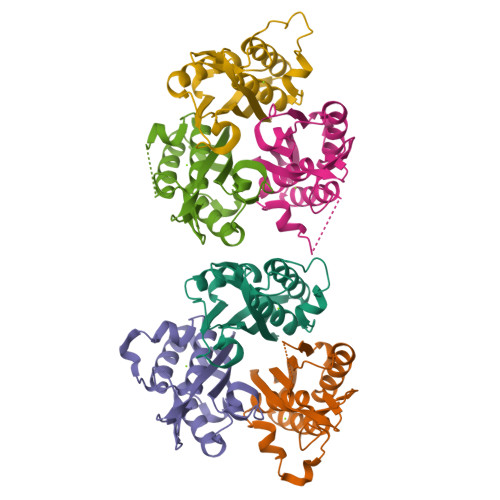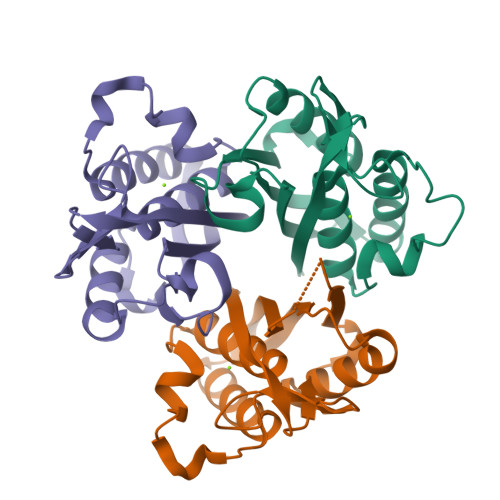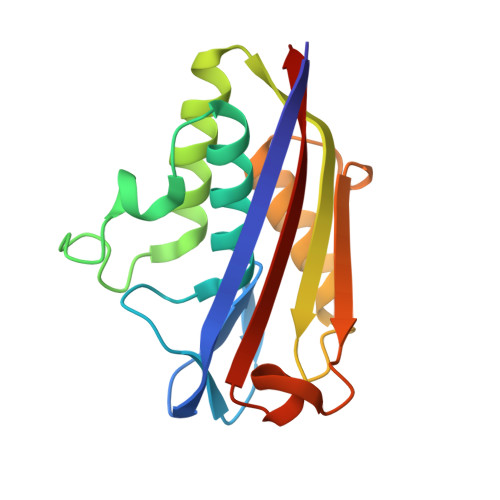Crystal structure of IspF from Bacillus subtilis and absence of protein complex assembly among IspD/IspE/IspF enzymes in the MEP pathway.
Liu, Z.C., Jin, Y., Liu, W.F., Tao, Y., Wang, G.G.(2018) Biosci Rep
- PubMed: 29335298
- DOI: https://doi.org/10.1042/BSR20171370
- Primary Citation of Related Structures:
5IWX, 5IWY - PubMed Abstract:
2-C-Methyl-d-erythritol 2,4-cyclodiphosphate synthase (IspF) is a key enzyme in the 2-C-Methyl-d-erythritol-4-phosphate (MEP) pathway of isoprenoid biosynthesis. This enzyme catalyzes the 4-diphosphocytidyl-2-C-methyl-d-erythritol 2-phosphate (CDPME2P) to 2-C-methyl-d-erythritol 2,4-cyclodiphosphate (MEcDP) with concomitant release of cytidine 5'-diphospate (CMP). Bacillus subtilis is a potential host cell for the production of isoprenoids, but few studies are performed on the key enzymes of MEP pathway in B. subtilis In this work, the high-resolution crystal structures of IspF in native and complex with CMP from B. subtilis have been determined. Structural comparisons indicate that there is a looser packing of the subunits of IspF in B. subtilis , whereas the solvent accessible surface of its active pockets is smaller than that in Escherichia coli. Meanwhile, the protein-protein associations of 2-C-Methyl-d-erythritol-4-phosphatecytidyltransferase (IspD), CDPME kinase (IspE) and IspF from B. subtilis and E. coli , which catalyze three consecutive steps in the MEP pathway, are analyzed by native gel shift and size exclusion chromatography methods. The data here show that protein complex assembly is not detectable. These results will be useful for isoprenoid biosynthesis by metabolic engineering.
Organizational Affiliation:
Key Laboratory of Environmental and Applied Microbiology, Chengdu Institute of Biology, Chinese Academy of Sciences, Chengdu 610041, China.




















